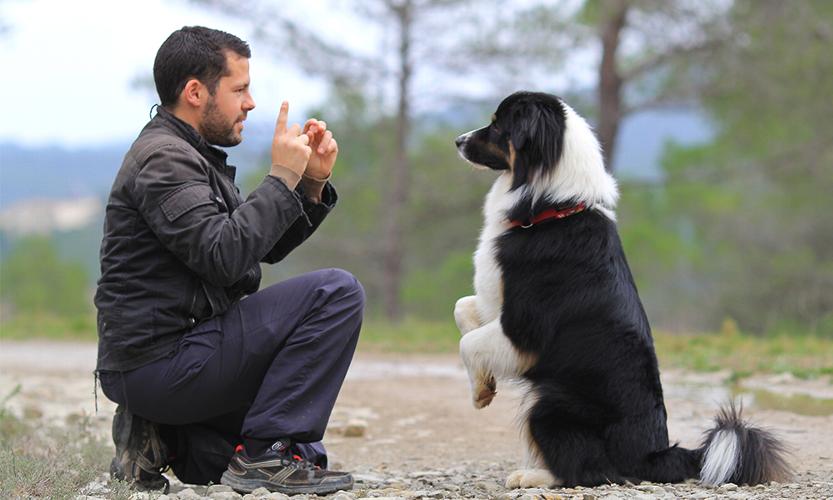Why impulse control should be at the heart of your dog training programme
At JanB Dog Training, we believe that impulse control is not just a trick—it's a fundamental skill that promotes good behaviour, enhances safety, and strengthens the bond between you and your dog.
What Is Impulse Control Training?
Impulse control training focuses on teaching your dog to wait, think, and make calmer choices instead of reacting impulsively to situations. Common impulse control behaviours include:
- Not lunging at food or treats.
- Waiting calmly before going through doors.
- Resisting the urge to chase after other animals or moving objects.
- Sitting or staying when guests enter your home.
These behaviours show that your dog is learning to manage their impulses, allowing them to respond thoughtfully rather than react instinctively.
Why Is Impulse Control Important?
Enhances Safety
Teaching impulse control helps prevent dangerous situations, such as running into the street, jumping on people, or grabbing potentially harmful objects. A dog with impulse control will wait for your direction before acting, reducing the risk of accidents.
Improves Behaviour
Impulse control is the foundation of many good behaviours, from not begging at the dinner table to staying calm during a walk. It sets the stage for more advanced training and helps your dog develop better manners in everyday life.
Reduces Stress and Anxiety
Dogs that lack impulse control often experience higher levels of stress because they are constantly reacting to their environment. Training them to pause and make deliberate choices can help reduce anxiety and create a more relaxed and content dog.
Strengthens the Human-Dog Bond
When you take the time to teach impulse control, your dog learns to trust and rely on you for guidance. This strengthens the bond between you and builds mutual respect, making your relationship more enjoyable and harmonious.
Key Techniques for Impulse Control Training
Teaching 'Sit' and 'Stay'
One of the simplest ways to begin impulse control training is to teach your dog to sit and stay on command. These cues encourage your dog to pause, think, and wait for your next instruction before acting.
How to Start:
Begin by asking your dog to sit. Once they are sitting calmly, reward them with a treat. Gradually increase the time between the "sit" command and the reward, teaching them patience.
Next, introduce the "stay" command. Start with short durations and slowly build up the time your dog can remain in place before receiving a reward.
'Leave It' Command
The "leave it" command is a crucial part of impulse control training. It teaches your dog to resist the temptation to grab or chase after something, such as food, toys, or other animals.
How to Start:
Place a treat in your hand and close your fist. Allow your dog to sniff or paw at it, but do not open your hand. As soon as your dog pulls back or looks away, say "leave it" and reward them with a different treat from your other hand. Repeat this process, gradually introducing more tempting objects and practicing in various environments.
'Wait' at Doors and Thresholds
Training your dog to "wait" before passing through doors or entering new spaces helps prevent bolting and teaches self-restraint.
How to Start:
Stand with your dog in front of a door. As you open the door slightly, ask them to "wait." If they try to move forward, close the door and wait for them to sit or stand calmly. Once they remain still, reward them and give them permission to go through with a release cue like "OK."
Impulse Control Games
Incorporating fun games into your training can help reinforce impulse control in a positive way. Games like "It's Your Choice" or "Red Light, Green Light" encourage your dog to think before acting and build self-discipline.
It's Your Choice:
Hold a handful of treats in front of your dog. If they try to grab the treats, close your hand. When they pull back or wait calmly, reward them by offering a treat. This teaches them that patience and calmness are rewarded, while impulsive behaviour is not.
Red Light, Green Light:
This game is perfect for reinforcing impulse control during playtime. Allow your dog to move or run when you say "green light" and have them stop immediately when you say "red light." This game teaches your dog to listen and respond to commands even when they're excited.
How Impulse Control Benefits Training
Impulse control training forms the foundation for many other training behaviours. By teaching your dog to be patient and think before they act, you'll notice improved focus during obedience training, better behaviour in social settings, and a dog that is more attentive and responsive to your commands.
Additionally, impulse control training helps reduce frustration for both you and your dog. With clear boundaries and expectations, your dog will feel more confident and secure, making the training process smoother and more enjoyable.
A valuable skill for the lifetime of your dog
Impulse control training is one of the most valuable skills you can teach your dog. It promotes good behaviour, enhances safety, reduces stress, and strengthens the bond between you and your dog. At JanB Dog Training, we specialise in helping dogs of all ages and breeds develop impulse control, creating calm, well-behaved companions.
If you're ready to improve your dog's Impulse Control, contact us at 01322842483 or Support@janbdogtraining.com to schedule a consultation. Let's work together to build a well-behaved, happy, and confident dog!
